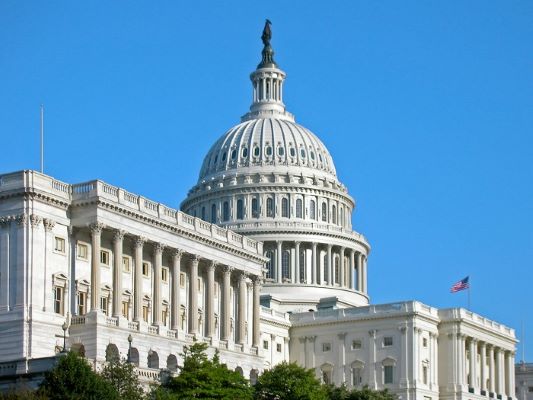Inside D.C.
It was all about trade, or a lack thereof, in 2019

How to describe the DC gyrations withstood by agriculture in 2019 without resorting to understatement or trite reference to “rollercoasters” or “seesaws?” Suffice it to say, it’s been an incredible year, and as a colleague likes to say, “You can’t make this, er, ‘stuff’ up.”
The year kicked off with a new Democrat-controlled House and the promise of partisan pre-2020 election warfare.
Congress and the White House immediately fumbled their way into a partial federal government shutdown, locking up over billions for border walls, perfectly establishing the political posturing that will hallmark 2020 as an election year. President Trump huffed out of one White House meeting with Democrat leaders; they stood him up at another. Producers, ag research and state governments were victims USDA was caught in the partial shutdown net, freezing operations for over 35 days. No program, crop insurance and emergency payments, including Market Facilitation Program (MFP), were sent.
I wouldn’t be the only one to argue it went downhill from there.
It’s fair to say the biggest economic “impact” was wrought by administration trade policy or lack thereof if the critics are to be believed. Administration actions are firmly rooted in the president’s frustration over lopsided U.S. balances of trade with just about every developed country on the planet. Wrapped in the rationale of “national security,” in nearly all cases White House bi or multilateral moves to erase or partially rebalance those numbers had a serious and mostly negative impact on U.S. food production and hard-won ag export markets.
Trump first hit most of the world – with a few exceptions – with tariffs on steel and aluminum imports, then went to war with China to prove which has the greater political will to whittle away at trade deficits and balances. The Trump trade war has eroded export markets for innocent and already economically strapped U.S. farmers and ranchers, though China says now it will buy $40-50 billion in U.S. ag production over the next two years. Cynics are quick to remind: China “pledged” such action before and walked away. The lack of a tariff détente also threatens the innocent economies of trading partners from Australia to the European Union (EU). Trump ends this year with just “phase one” of a hoped-for trade and tariff deal between the world’s two largest economies, promising of multiple phases to follow.
Loyal and adept administration war horse U.S. Special Trade Representative (USTR) Robert Lighthizer fought the very good fight and delivered a $1-trillion reinvented NAFTA, and Trump dubbed it the U.S.-Mexico-Canada Agreement (USMCA). Democrats tinkered with the deal, negotiating with Lighthizer to fashion the final product a bit more in their image than Trump’s. The tripartite treaty was ultimately and overwhelmingly blessed by the House. In his spare time, Lighthizer and his team negotiated a “mini” ag trade deal with Japan representing $7.2 billion in additional ag sales to that most lucrative of Asian markets.
Speaking of the EU, last summer’s much ballyhooed bilateral trade talks never happened because Trump insisted on talking ag trade and EU officials said they didn’t have the energy, time or will to tackle such negotiations. Such talks failed when President Obama sat in the White House; no reason to think the outcome would be any different today. Now the U.S. and EU tariff sword rattle over which is bigger, EU financial generosity to Airbus or U.S. largesse as relates to Boeing, and ag is in the crosshairs again. U.S. agriculture is smiling because for the time being, the EU is the bad guy and square in the crosshairs of World Trade Organization (WTO)-blessed U.S. tariff tabulators are French and Italian wines, EU dairy products, including cheeses, luxury goods and so forth.
There’s still cleaning up to do trade-wise, but things are starting to shape up.
After China and the U.S. sign their phase one deal – likely this week – it’s on to phase two, three and so on. Each round can threaten all that has gone before. After the House’s overwhelmingly lopsided bipartisan approval of USMCA, Sen. Chuck Grassley (R, IA) set January 7 for his Senate Finance Committee to bless the implementing legislation. Then it’s on to the Senate floor for the final vote. The Japanese “mini” deal kicks in next week as well, but there’s a ton of other stuff the two nations will negotiate for a much broader trade deal, including getting more for dairy and rice than what the Japan gave most other U.S. products.
Oh, I almost forgot that while all of that was happening, the House impeached the president for abuse of power and obstructing Congress. This makes, Trump the third president to gain that status. President Andrew Johnson was the first back in 1868; President Bill Clinton was the second in 1998.
From me to all Brownfield Ag News faithful, Happy New Year! Please keep the holiday safe.

Add Comment